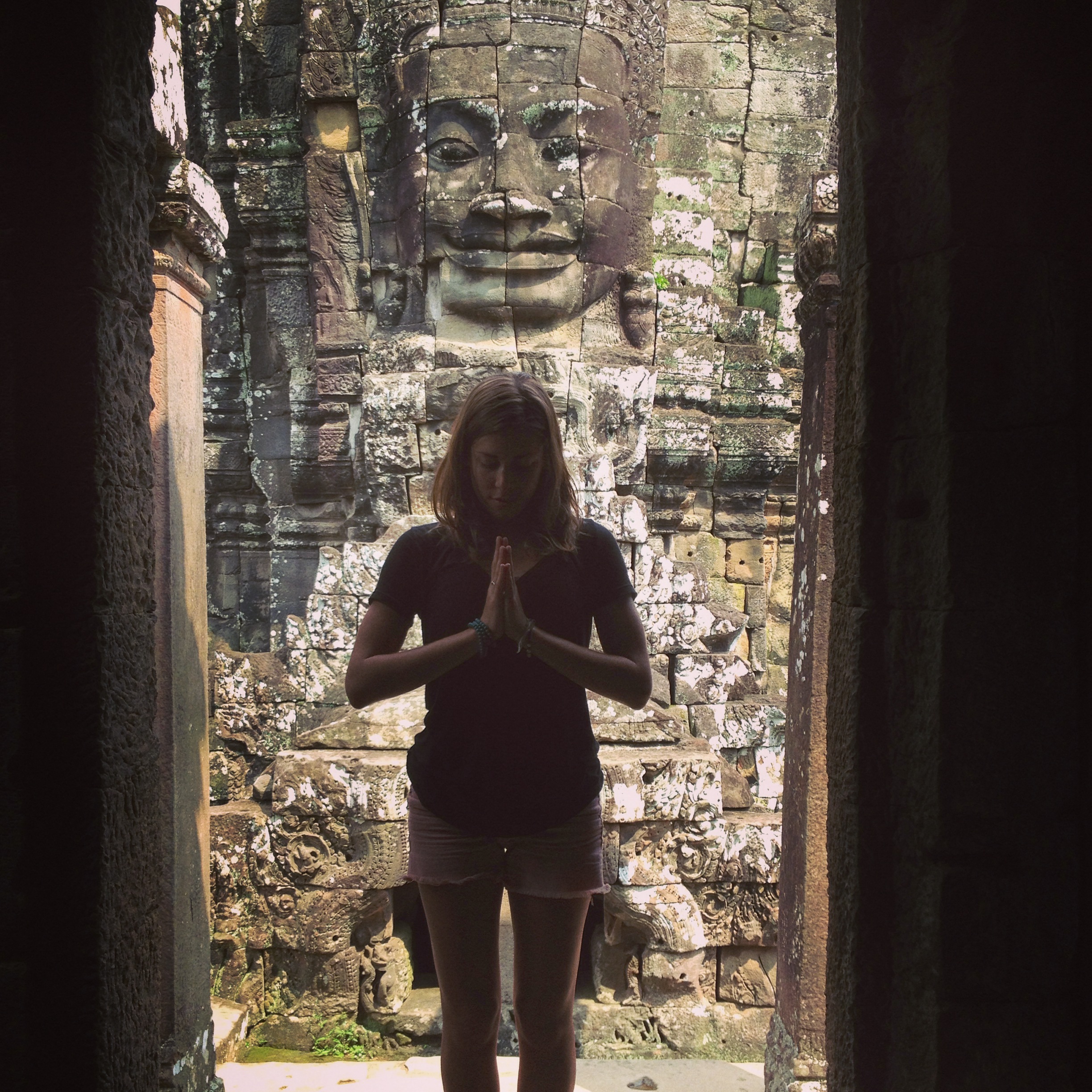
Yin Yoga is a very soothing and restorative practice that allows us to stretch deep into our muscles as well as our minds.
The practice is also deeply meditative allowing us to turn our attention inward and listen in the quiet. When practiced lovingly and openly, Yin reveals to us beautiful, unparalleled life lessons:
1. The Strength of Surrender
“Struggle and surrender are the two poles of free will.” ~ Deepak Chopra
“Let go.”
We hear this all the time, especially in yoga. But, the truth is, letting go requires a lot more than a simple reminder. Whether it’s letting go of our past or letting go of our anxieties or letting go of a current situation that is not serving us, surrendering takes a lot of strength and a lot of courage. Knocking down walls that we build to protect ourselves and releasing deep-rooted tension that we hold in our bodies takes vulnerability. And vulnerability requires incredible strength. As we hold postures in Yin Yoga for extended periods of time, we allow our bodies to truly surrender to the forces of gravity and release deep into the muscles and fascia. This physical release most certainly leads to a mental and emotional release. And this release takes strength. Surrender just might be, in fact, one of the strongest forces out there.
2. The Power in Stillness
“To a mind that is still, the whole universe surrenders.” ~ Lao Tzu
For Type-A personalities, such as myself, being still is one of the most challenging things to do. Ever hear a yoga teacher mention that Savasana is the most difficult posture in the yogic repertoire? This is because stillness truly tests our yogic nature. When the movement of your body does not distract your mind, you are forced to concentrate on the movement of your mind and, subsequently, search for stillness there. And when you find stillness there, it is said that you reach Samadhi, or Enlightenment.
And that is a powerful, powerful force.
3. The Beauty of Silence
“Listen to the silence until you hear your soul.” ~ Jernej Graj
Silence is golden.
There is so much to be learned from silence. In silence, we hear ourselves. And how often do we find silence, absolute and total silence and stillness, in our own lives? Unless you are a Tibetan monk, I’m assuming that it’s a pretty rare phenomenon. Allowing for the removal of all external stimuli, and just listening in the quiet is so numbingly beautiful. Have you ever gone outside during the first snowfall of winter and just listened to the quiet? It is a magical silence. When you lose yourself in the silence of your mind, you just might hear your own inner divinity. And that is, likely, the most beautiful experience in the world.
4. The Virtue of Patience
“Have patience. All things are difficult before they become easy.” – Saadi
Patience is difficult.
It is difficult for little children asking “are we there yet?” and it is equally difficult for full-grown adults. Yin lets us to hold postures for extended periods of time allowing us to fully reap their benefits. Sometimes when we’re deep into a long-held hip-opener, we find ourselves asking “are we there yet?” But holding there just a little bit longer is exactly what teaches us to have patience.
When you find patience on your mat, it will translate to one of your greatest virtues in life.
5. The Importance of Breath
“The quality of our breath expresses our inner feelings.” ~ TKV Desikachar
Nothing will show its face more in a Yin practice than a disconnect with the breath.
If you are not breathing deeply, then you are in pain, plain and simple. And no one wants to be in pain. That is not why we practice yoga—we practice to prevent and/or alleviate pain.
Breathing through deep stretches held in Yin connects your body to your mind and back again. So how can you expect surrender, stillness, silence, and patience from your body in your practice and in your life? Connect to your breath. It is of vital importance.
And finally,
6. The Empowerment of Support
“At times our own light goes out and is rekindled by a spark from another person. Each of us has cause to think with deep gratitude of those who have lighted the flame within us.” ~ Albert Schweitzer
Support, for some, can be tricky. We all need it at one point or another. But many find that they are ashamed or too prideful to receive it.
Yin teaches us to always support ourselves with our breath. It also teaches us to respect our bodies by receiving support from props.
When you’re holding pigeon pose for ten minutes, you definitely want to be propped up. And, coincidently, supporting your body in Yin poses actually allows you to stretch deeper. When your muscles are supported by props (such as a bolster, a blanket, a block, etc.), they can relax and you can release your weight into the object. If your muscles are suspended in the air, they must remain engaged to support your weight and therefore cannot find the deep release that they otherwise would if supported. Yin teaches us that sometimes it is beneficial to literally lean our weight. We cannot always hold ourselves up on our own. If we allow ourselves to be supported, we can literally go further. And knowing this is incredibly empowering.
Yin is a beautiful practice that offers so many benefits, both physically and (in the true spirit of yoga) mentally as well. If we allow our bodies to incorporate these simple life lessons, we, in turn, teach our minds to incorporate them too.
May your practice continually teach you all of life’s mystical and magical lessons.
Love elephant and want to go steady?
Sign up for our (curated) daily and weekly newsletters!
Author: Leah Sugerman
Associate Editor: Kendra Hackett/Editor: Catherine Monkman
Photo: Courtesy of Leah Sugerman


Read 5 comments and reply